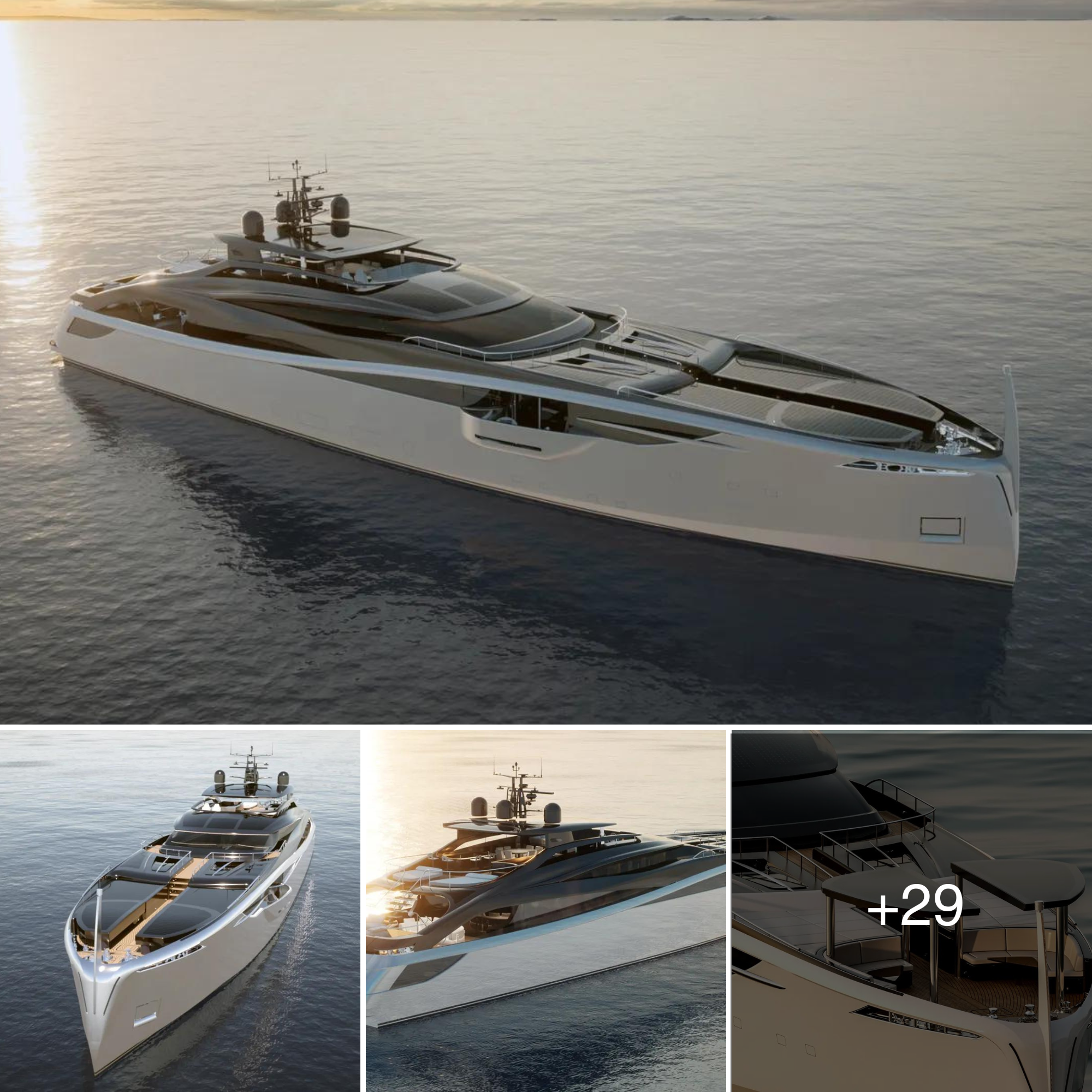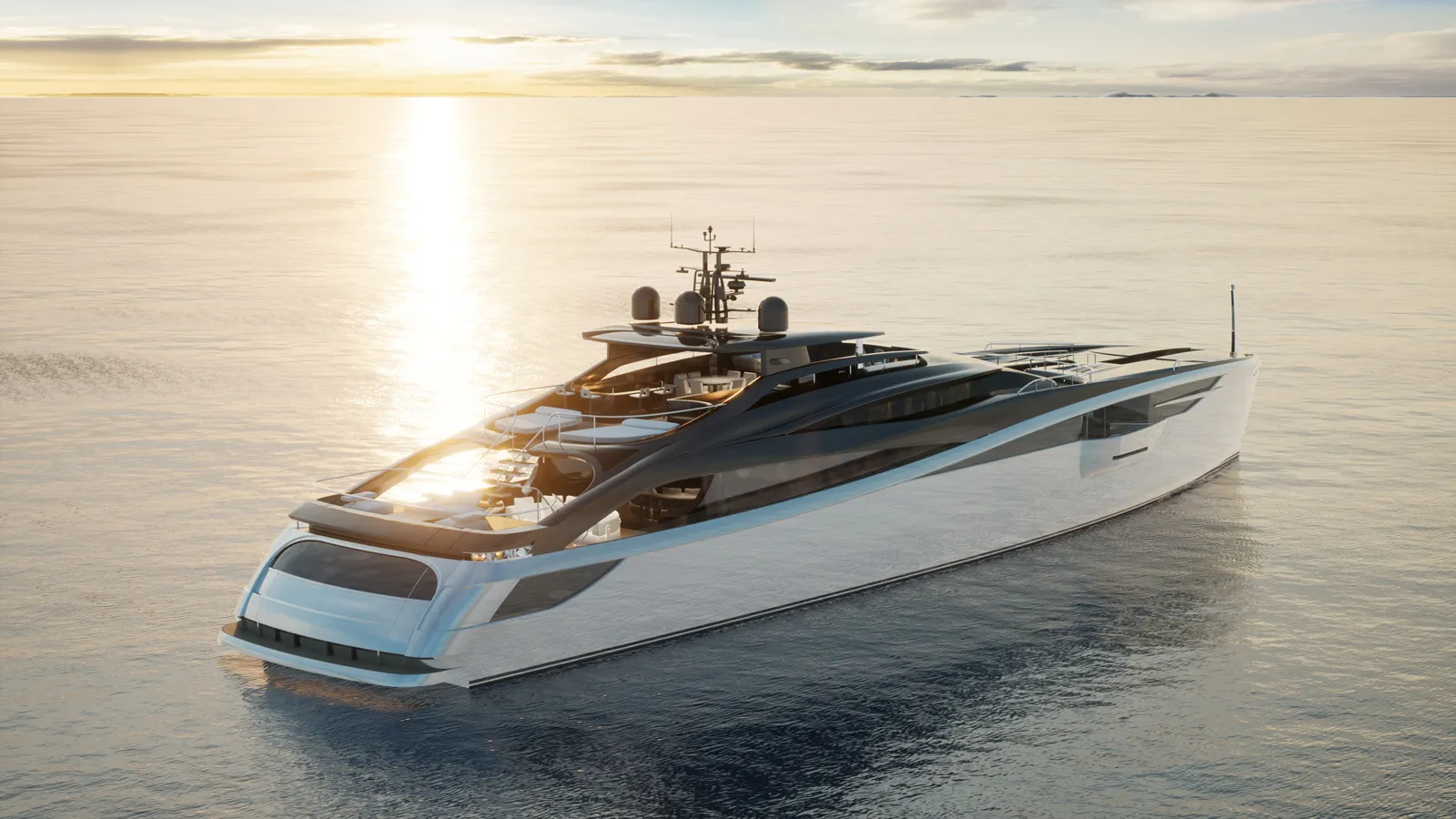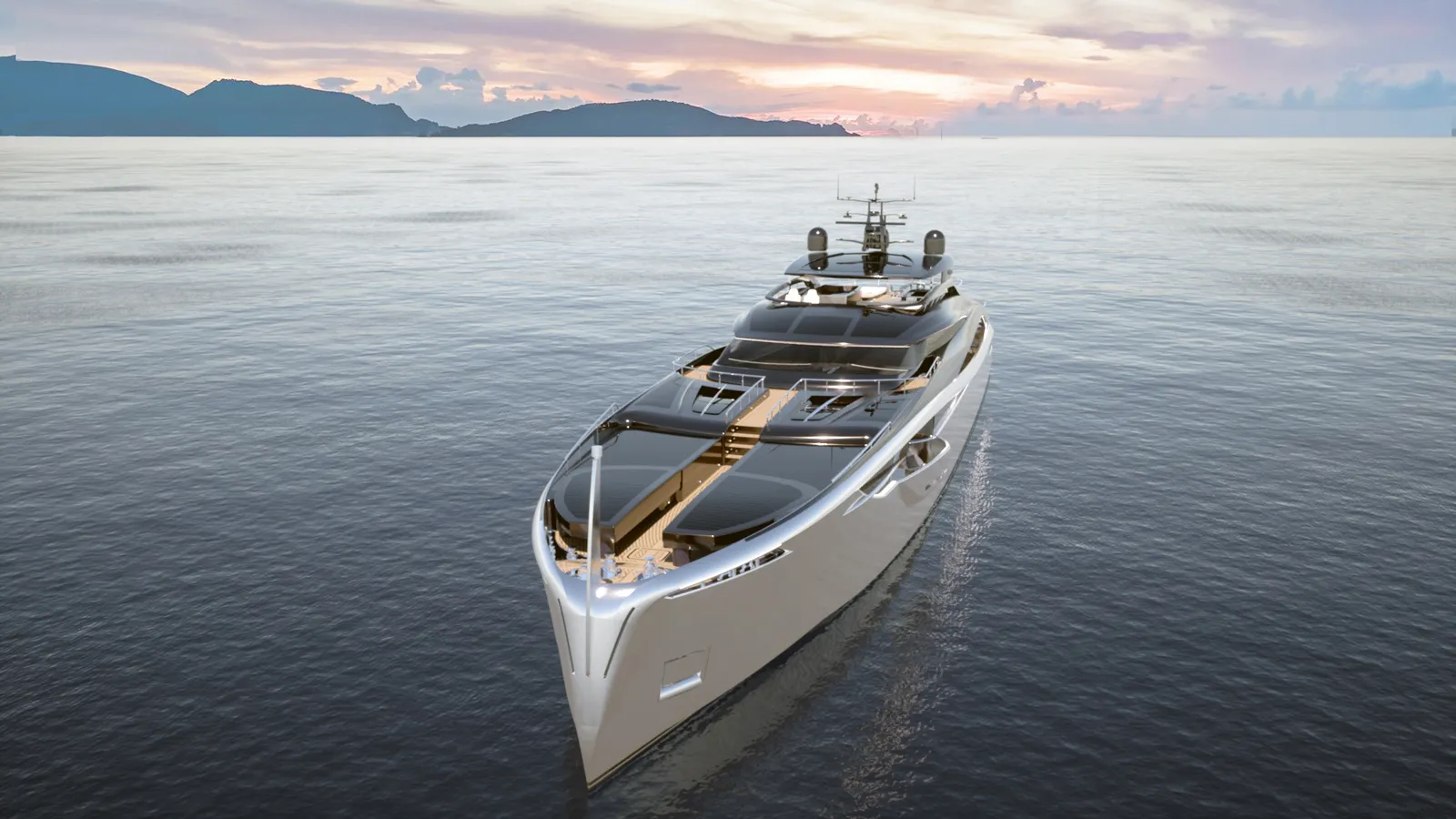

The Italian shipyard Rossinavi has unveiled its most recent design, a 42,2 m hybrid-electric yacht dubbed Project Infinity 42 BluE.
Following the success of its Sea Cat hybrid catamaran (currently under construction with a delivery date of 2024), Rossinavi has partnered with Fulvio de Simoni once more to incorporate its new eco-friendly navigation technology, BluE, into a monohull design.

The yacht will be able to navigate in full-electric mode 90 percent of the time in a daily navigation scenario and 70 percent of the time in an Atlantic crossing scenario, thanks to solar panels and a large battery cell. The remainder of the voyage will be completed with the assistance of diesel generators.
Project Infinity 42 BluE incorporates an innovative eco-displacement hull that reduces energy consumption below that of a conventional full-displacement hull at cruising speeds of 10 to 11 knots.

This project has been guided by the objective of innovating technologies and onboard structures for more sustainable, comfortable, and experiential navigation. Federico Rossi, Rossinavi’s chief operating officer, remarked, “The result is a navigation experience that is completely immersive, elevating the quality of the onboard experience.”
The Rossinavi Artificial Intelligence and Zero Noise Technology systems installed on the Infinity 42 BluE will optimise the vessel’s overall performance while enhancing passenger comfort.

In addition, the vessel’s interior features five spacious guest accommodations on the lower deck and a master cabin that spans the entire width of the vessel’s 8.2 metre beam. Large ports on either side of the yacht provide ample access to the outdoors while blending seamlessly with the yacht’s subtle curvilinear design.
Onboard amenities include a sundeck with full-service dining, a bar, numerous sunbathing areas and a Jacuzzi. In addition, a panoramic viewing area forward on the main deck provides protection from the elements while converting solar energy via surface-mounted solar panels.